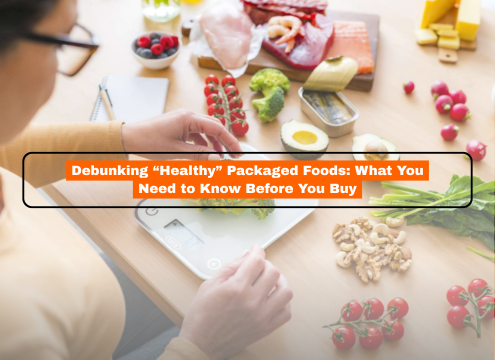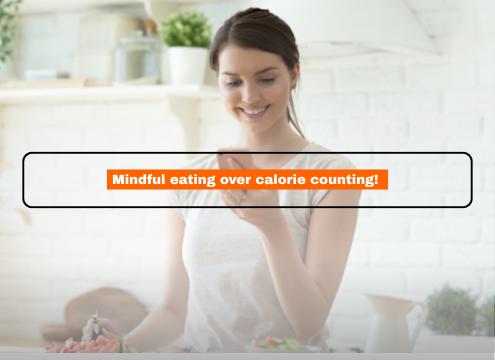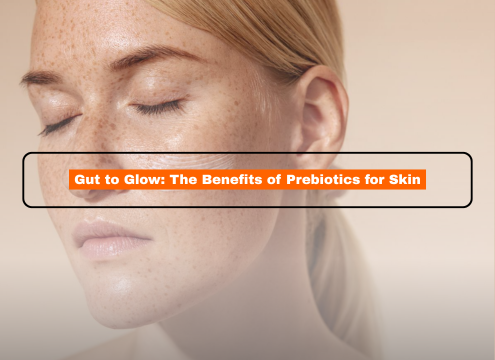In today’s fast-paced world, packaged foods seem like a blessing—quick, convenient, and often labeled as “healthy,” “natural,” or “low-fat.” But let’s be honest: how often do we pause to question what’s really inside these “health” products?
Unfortunately, many of these so-called healthy foods are packed with hidden sugars, artificial additives, and inflammatory oils that may sabotage your wellness journey.
It’s time to peel back the packaging and look beyond the front label.
Marketing vs. Reality: The Deceptive World of Packaged Foods
Walk through any supermarket aisle, and you’ll see products shouting promises:
- “Heart-healthy!”
- “100% Natural!”
- “Made with whole grains!”
- “No added sugar!”
These claims are designed to sell—not to keep you healthy. The truth is, many of these items are ultra-processed, with more in common with junk food than with whole foods.
Top “Healthy” Packaged Foods That Aren’t So Healthy
Let’s break down a few common examples that are often mistaken for nutritious options.
1. Granola Bars: These seem like a great on-the-go snack. But most commercial granola bars are:
- High in added sugar (sometimes disguised as honey, brown rice syrup, or cane juice)
- Full of preservatives
- Low in protein and fiber
Some bars have as much sugar as a chocolate bar—yet are marketed to fitness enthusiasts!
✅ Healthier option: Make your own granola bars with oats, dates, seeds, and nuts. Or choose brands with minimal sugar and real ingredients.
2. Flavored Yogurt
Marketed as good for digestion and bone health, flavored yogurts often contain:
- More sugar than a can of soda
- Artificial flavorings and stabilizers
- Low-quality fruit “flavor” instead of real fruit
Some “low-fat” versions are even worse—they remove fat and add sugar for taste.
✅ Healthier option: Go for plain, full-fat Greek yogurt and add fresh fruit or a drizzle of raw honey.
3. Trail Mix: Sounds healthy, right? Nuts, dried fruit, maybe some seeds. But…
- Many store-bought versions add candy, chocolate chips, and salted peanuts
- Dried fruits are often sweetened and preserved with sulfur dioxide
- Calories and sugar add up fast
✅ Healthier option: DIY your mix—use raw nuts, unsweetened dried fruit, pumpkin seeds, and a sprinkle of dark chocolate chips (if needed).
4. Veggie Chips or Puffs
With “spinach,” “beet,” or “carrot” on the label, these seem like a dream. But often:
- They’re made from potato starch and vegetable powders
- Deep-fried in refined oils
- Contain minimal actual vegetables
✅ Healthier option: Try air-dried veggie slices or bake your own with real vegetables like kale, sweet potato, or zucchini.
5. Protein Cookies and Snack Bars: These products target gym-goers, but many:
- Are loaded with artificial sweeteners, emulsifiers, and preservatives
- Use low-quality protein isolates
- Contain trans fats or palm oil
✅ Healthier option: Look for protein snacks with <5 ingredients, no sugar alcohols, and whole food-based protein (like seeds, nuts, legumes).
How to Read Labels Like a Nutrition Pro
Understanding food labels can be your superpower when navigating the world of packaged foods.
Start with the Ingredient List:
- Fewer is better – Aim for less than 8 ingredients.
- Choose products where you can recognize each item.
- Ingredients are listed in descending order by weight. If sugar is among the top 3—skip it.
Watch Out for Hidden Sugars:
Sugar goes by many names, including:
- Corn syrup
- Dextrose
- Fructose
- Agave nectar
- Fruit juice concentrate
- Maltodextrin
Tip: If more than one form of sugar appears, it’s a red flag.
Check Sodium Content:
Many “healthy” soups, sauces, and ready-to-eat meals contain excessive sodium, which can raise blood pressure and cause water retention.
- Aim for products with <300 mg per serving when possible.
Avoid Artificial Additives:
Look out for:
- Artificial colors (Red 40, Yellow 5)
- Preservatives (BHA, BHT)
- Artificial sweeteners (aspartame, sucralose)
These may be linked to inflammation, gut disruption, and long-term health concerns.
So, What Should You Eat Instead?
Don’t worry—this doesn’t mean all packaged foods are bad. The key is selective shopping and label awareness.
Here’s how to shop smarter:
✅ Whole Food-Based Packaged Snacks to Look For:
- Roasted chickpeas or mung beans
- Plain rice cakes with nut butter
- Unsweetened coconut chips
- Air-popped popcorn
- Nut butters (check for only “nuts + salt” on ingredients)
- Steel-cut or rolled oats
- 100% fruit or vegetable purees (no additives)
- Hummus cups with carrot sticks
These can be part of a balanced diet without compromising health.
Why We Fall for the “Healthy” Label Trap
1. Busy Lives = Quick Choices
We don’t always have time to cook, and packaged foods seem like a simple solution.
2. Marketing Manipulates Emotions
Words like “fit,” “light,” “natural,” or “low-fat” speak directly to our health goals—but often mean nothing in terms of nutrition.
3. We’re Not Taught to Read Labels
Nutrition education is rarely prioritized, leaving many of us unprepared to interpret labels critically.
What You Can Do Differently Starting Today
- Don’t fall for buzzwords. Flip the pack and read the actual ingredient list.
- Stick to single-ingredient foods when possible—fruit, vegetables, nuts, legumes, whole grains.
- Plan ahead. Prepare snacks and meals in bulk for the week.
- Use the 5/5/15 Rule: Look for <5g sugar, <5g saturated fat, and <150mg sodium per 100g.
- Teach your kids and family how to spot unhealthy packaged foods.
Let’s Shift from Processed to Conscious Eating
Choosing whole foods whenever possible isn’t about perfection—it’s about progress. It’s about developing a conscious awareness of what you’re putting into your body and why.
Remember:
- Real food doesn’t need a label.
- If it’s made in a plant—eat it with care.
- If it’s grown on a plant—eat it with confidence.





